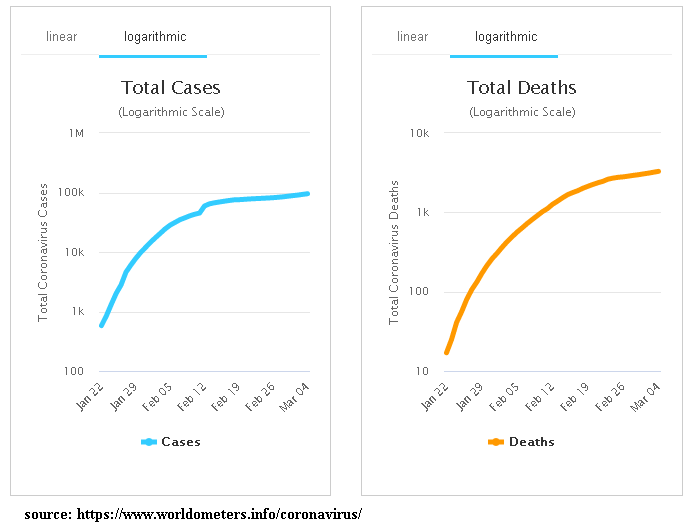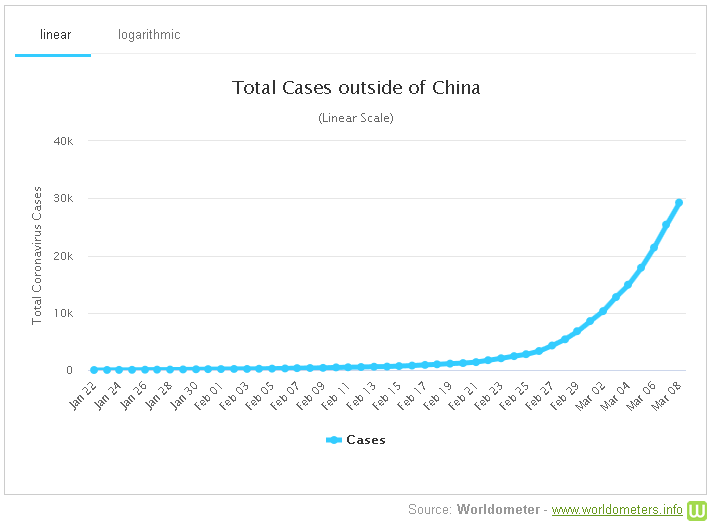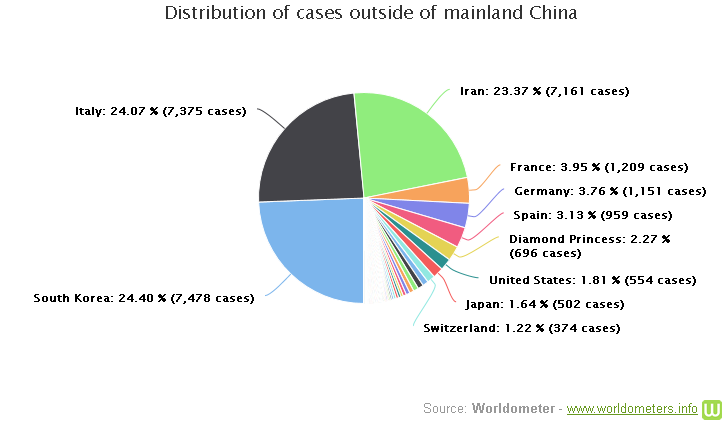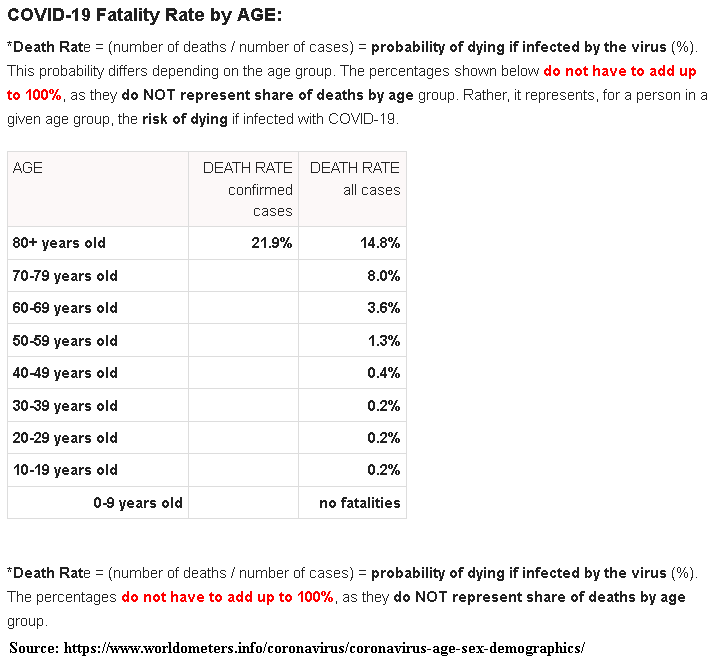Fears of the novel coronavirus, also known as COVID-19, push many people into irrational behavior which can be damaging sometimes. To avoid panic and unnecessary fears, I will try to shed some light on the current situation. Hopefully it will help you better understand the risks. However, please remember, that this is not a recommendation to buy or sell anything, it just my personal view on the situation.

Numbers versus Emotions
Likelihood of being infected
First, let us better understand the likelihood of being infected by the novel coronavirus, known as COVID 19.
The ease at which a virus can spread in our modern times is rather alarming. We live in densely populated cities, with effective and accessible transportation solutions between our population hubs.
COVID 19 has symptoms which are very similar to the seasonal flu, making it hard to decisively tell what exactly a sneezing person has. The outcome is very different – one is relatively harmless (many people are being vaccinated every year against the seasonal flu), the other can cause serious damages with much higher probability.
Symptoms of the novel coronavirus may appear in 2-14 days, during which the virus is contagious but the patient does not display any symptom (asymptomatic transmission).
Because of the misleading symptoms and the nature of our human-human interactions in the modern times, the new coronavirus is very likely to infect most of the people worldwide, unless strict measures are taken to contain the virus. The following charts, show data on the virus. Most of the data is coming from China, where the virus outbreak began in January 2020:

At first, the Chinese government did not want to admit that there was a need to worry. Dr. Li Wenliang, who was the first to tell about the new virus, was questioned and silenced by the government. Sadly, eventually he died of this same virus that he was trying to warn about.
The Chinese government found out the harsh reality soon enough. By implementing strict measures, it managed to contain the spread of the virus. As can be seen from the charts above, the number of new cases is no longer exponentially growing, reaching a plateau.
Global spread
But what about the rest of the world? China has a government that can easily limit freedoms in such times as this, with no significant resistance from its people. In other countries, isolating people can meet some resistance. Besides the ethical issues on limited freedoms, not many countries have the resources to deal with a massive outbreak in a well-organized and controlled way.
We know that COVID 19 is no longer just a Chinese issue. It spread to other countries around the globe.


Risk of dying
Recently we hear politicians and various news media quoting contradicting stats as if they have no clue on the real data. The thing is that you can understand and present the same data in different ways.
The average mortality rate as can be derived from the Chinese stats is about 3%. In this financial analytical review, I will try to distinguish between the different age groups that have different impacts on the economy. The age breakdown will also help you understand what your own risks are when it comes to COVID 19:

Looking at this data, it is clear that the new coronavirus is significantly more dangerous for the elderly. Additional analysis reveals that the likelihood to die is higher for those with some pre-existing medical conditions (such as asthma, diabetes, heart disease).
The population that participates in the workforce varies from country to country, as well as the composition (by age group) of population in each country. However, a rough estimate on the ages of 15-60 (which are likely to be a part of the labor force) is a mortality rate of about 0.5%.
A maximum of 0.5% of the entire labor force worldwide dying is devastating, but at least it is not the average 3%. Understanding numbers is very important, especially when you have to adjust for the changes to come.
Recovery
Many worry about the paralytic effect on the economy. Many businesses halted their operation, children do not go to schools, vocations are canceled, etc.
Harvard published their comments on coronavirus, where they say that for people with mild symptoms, the recovery is within few days:

Since, the majority of people have mild symptoms, they are likely to feel better in only few days after having the symptoms. People who were infected and recovered, can go back to work and business activity does not necessarily has to halt completely.
Please also remember, that a big part of the economy nowadays works remotely from home or small uncrowded offices. The real impact on the economy is questionable.
Other issues
There are several issues that can make this outbreak more or less severe.
Limited capacity in hospitals: hospitals are not meant to treat large number of people at the same time. Their ability to scale up and the ability of each country to regulate the spread rate in their boarders, will both determine how damaging it can become in your country.
Tests and vaccines: having available tests that help sort the cases (regular flu versus COVID-19), can greatly help in containing the virus. Having vaccines, though not foreseen in the nearest future, can stop the panic and reduce the risks.
Virus mutating: viruses, just as about anything dynamic in our world, can evolve into more resilient or deadly types. Recently, Chinese scientists published their genetic analysis where they suggest that the L strain of the virus is more aggressive. It is hard to tell for sure now, but if the virus is not contained, more mutations are expected.
Conclusion
Though the virus has spread out of China and is likely to infect many more people, it is important to understand, that if handled properly by your government and your healthcare system, the mortality rate can be lowered significantly.
If you are older than 50 and have pre-existing health issues, you should be cautious. Try avoiding unnecessary public crowded events, write down the relevant emergency numbers and make sure you wash your hands. Drinking water and having a good sleep is also beneficial.



Comments